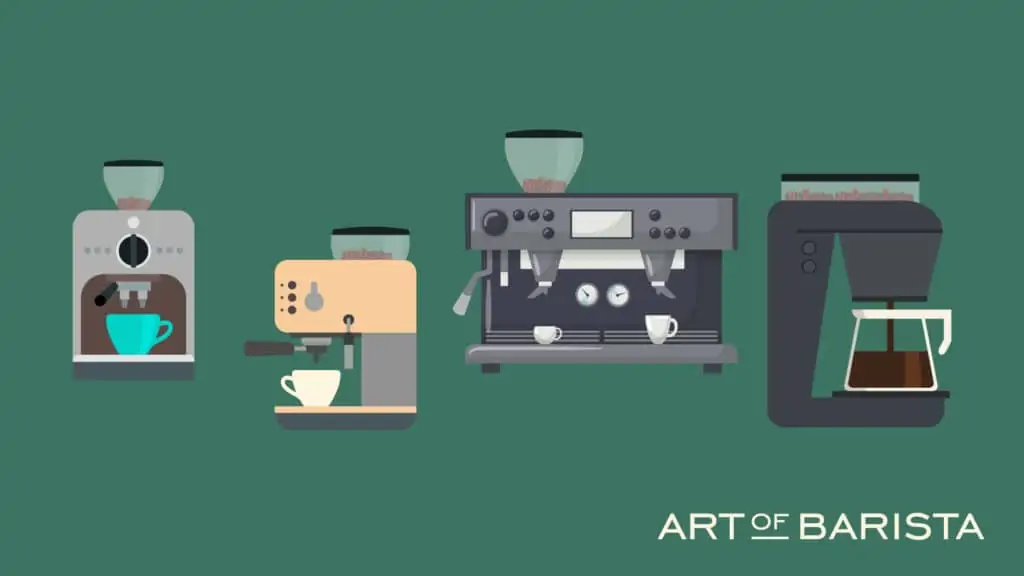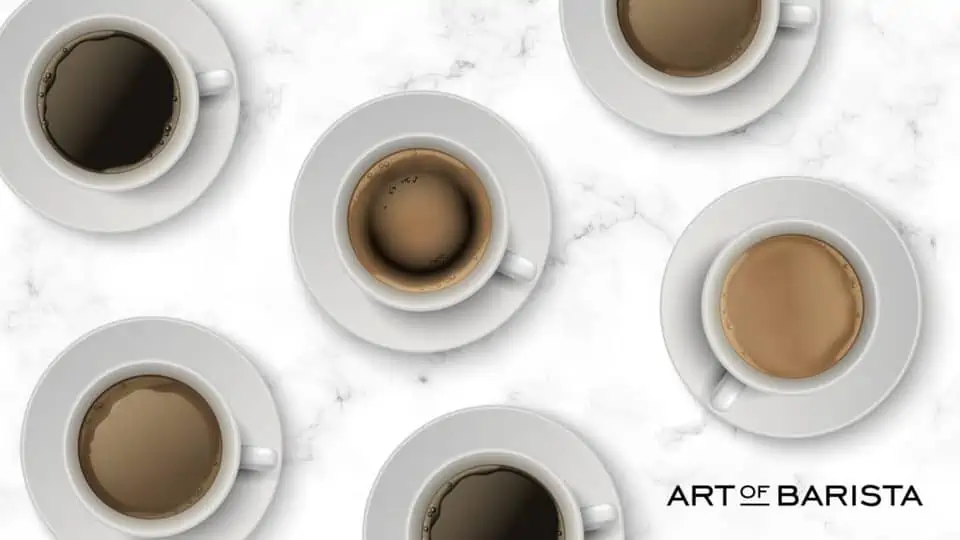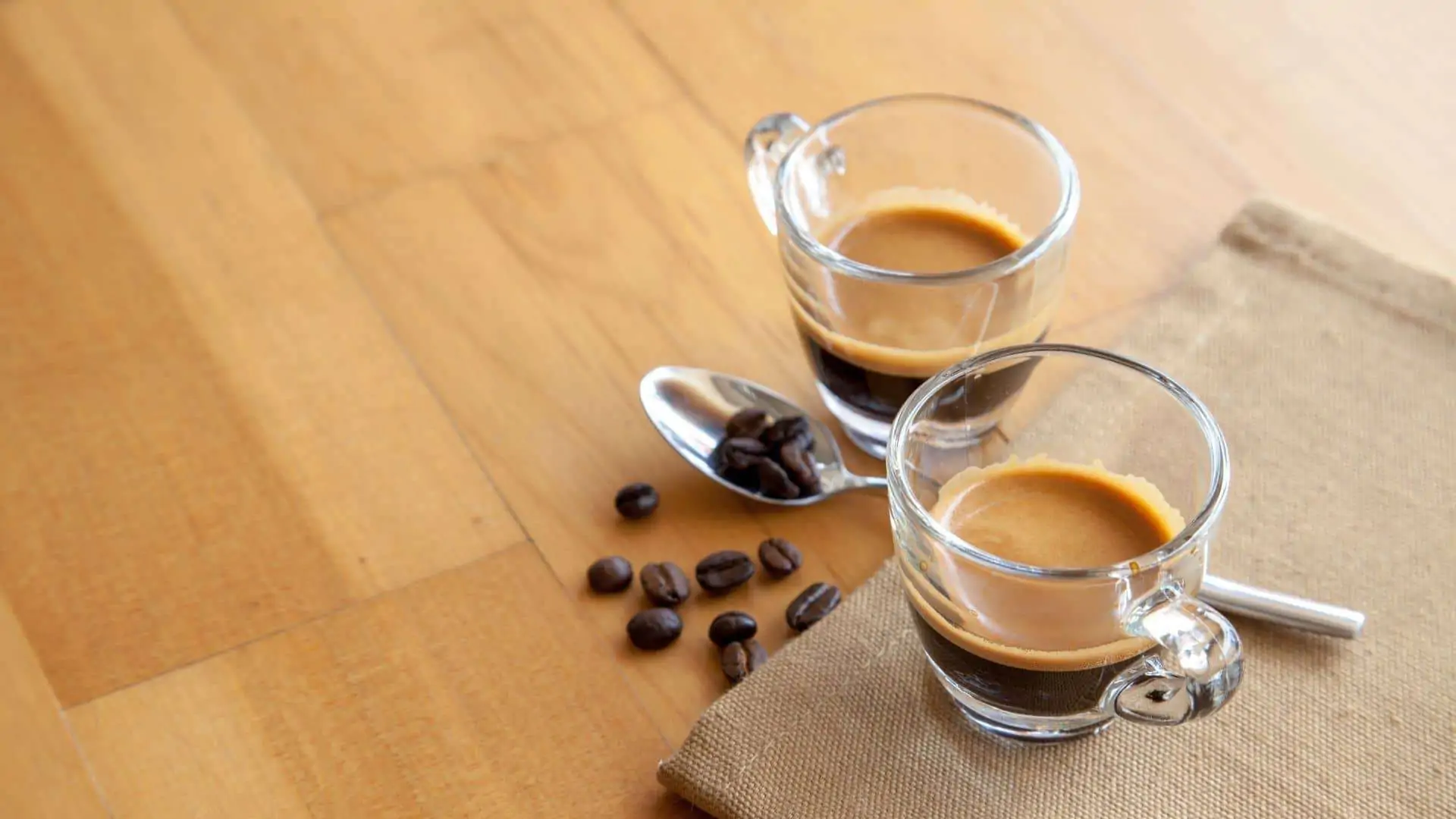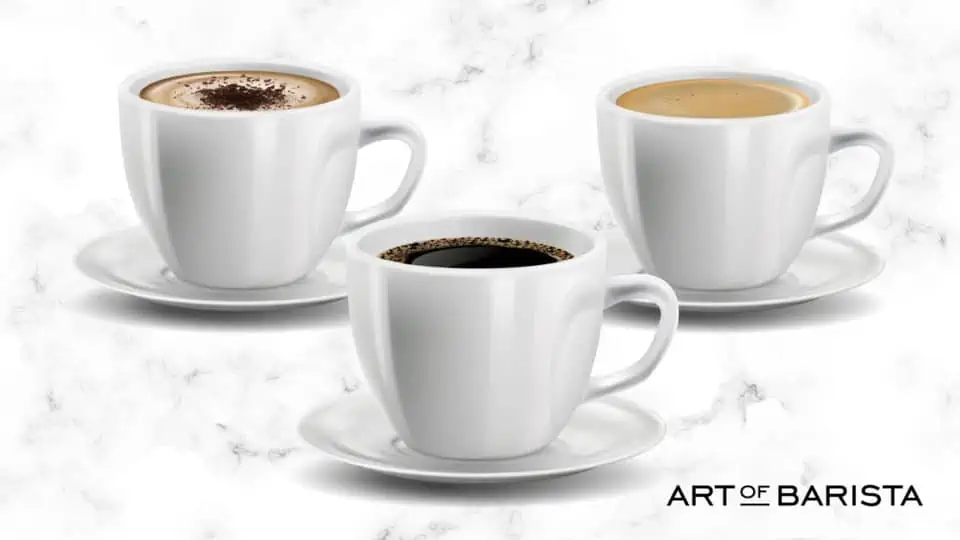When it comes to coffee, the most common question that espresso lovers get is: “Why can’t people just drink regular coffee as my parents and grandparents did?”
This generation has grown up with sodas, energy drinks, and so much more.
With these options available, it’s hard to convince someone who has never tried espresso before to give it a go.
Espresso is very intense and there’s a whole world of flavors and aromas that will open up your senses.
It doesn’t take long before coffee fanatics start chasing after different espresso drinks and the process of describing the difference between a nutty and chocolatey coffee becomes second nature.
There are so many different espresso drinks that taste amazing with milk, whipped cream, or fruit syrups added to them.
We’ve put together information about espresso and what makes it unique and sought after.
What Is Espresso?
Espresso is a type of coffee that we make by forcing hot water or steam through finely-ground coffee beans.
The term “espresso” refers to the process of brewing the beverage under pressure, and not to an actual bean or drink.
You can buy an espresso machine or moka pot to make some at home.
It’s different from drip-brewed coffee because espresso uses compacted finely ground coffee beans instead of a paper filter.
The result is a strong drink with rich flavor that contains roughly 1/3 the caffeine of a serving of drip coffee.
Etymology and Spelling
“Espresso” comes from the Italian word for “express” since it is one of the fastest ways to make coffee.
It requires approximately 20-30 seconds to produce.
History of Espresso
The story starts in 1884 when an Italian inventor named Angelo Moriondo filed a patent for “new steam machinery for the economic and instantaneous confection of coffee beverage.”
Despite inventing the machine that could produce coffee in under a minute and with pressure, Moriondo never tried selling it.
Luigi Bezzera, who worked in a coffee bar, modified Moriondo’s machine to produce what he called “the mother of all coffees.”
The modification added a pressure chamber to increase the water temperature above boiling point so that Bezzera could produce multiple coffees in less than a minute.
Bezzera’s coffee was served at the Italia Coffee House in Milan, Italy, and had no problem becoming popular.
This version of the coffee machine became a standard throughout Italy.
Soon other cafes started producing their own versions.
It wasn’t until 1901 that Bezzera patented his invention.
Pavoni acquired Bezerra’s patents in 1903 and made several improvements to the design.
Then in 1933, Hungarian-Italian Francesco Illy filed a patent for an espresso machine that used lever action to force the hot water through the ground coffee.
Gaggia introduced the hand-pumped espresso machine in 1947.
Thanks to Gaggia, in the 1940s and 1950s, Italian manufacturers started mass producing modern versions for commercial use.
In 1958, home machines became available but weren’t very popular due to pricing and being time-consuming to operate.
By the 1960s, domestic machines became more common in Italy.
They were now a status symbol among well-off families.
La Pavoni began producing these new compact devices, and the famous British department store Fortnum & Mason helped make them popular.
Today, there are many different kinds of home machines for espresso, ranging from stovetop brewers to fully automatic options.
It is easy to step outside and grab an espresso beverage at Starbucks or any other store that sells coffee drinks.
Espresso vs. Others

What’s the Difference Between Espresso vs. Coffee?
Espresso and brewed coffee differ due to the grind of the bean and the brewing method.
Good espresso begins with a fine ground and the highest pressure, which extracts rich flavors and oils but doesn’t contain bitter compounds.
Brewed coffee uses a coarser ground to allow water to penetrate the beans more easily.
It takes much longer (about five to seven minutes) with less intense pressure.
So the water extracts more compounds, including bitter flavors.
What’s the Difference Between Espresso vs. Ristretto?
Ristretto is simply a “restricted” espresso shot.
A shot of espresso has around seven grams of ground coffee beans.
Ristretto only uses five grams. This drink is often sweeter than espresso.
How Much Caffeine Is in a Shot of Espresso?
A good-quality double shot of espresso has roughly 60-100 milligrams of caffeine.
The amount of caffeine in a shot of espresso varies depending on the bean we use and how finely we grind.
Why Is Espresso So Strong?
Our espresso shots are so strong because we brew them under high pressure.
Such pressure extracts the coffee oils from the beans, which results in a much more potent beverage.
What Are the Benefits of Espresso?
Did you know that there are benefits to drinking espresso besides getting a nice caffeine jolt?
Espresso has tons of nutrients, including antioxidants and chlorogenic acid.
These antioxidant properties can help reduce free radicals in your body, lowering your risk of some diseases.
When it comes to reducing free radicals in your body, chlorogenic acid is one of the best antioxidants.
It can help reduce hypertension and other cardiovascular diseases, such as atherosclerosis, heart attack, and stroke.
It also helps with both long-term memory and concentration.
You can even reduce your risk of type 2 diabetes by drinking espresso.
Espresso also contains a compound called lignan, which has anti-mutagenic, anti-inflammatory, and antioxidative properties.
However, this compound may get extracted during percolation.
What Are Uses for Espresso?
We java lovers can use espresso in a variety of different recipes.
Some people enjoy drinking straight espresso shots, but others prefer to add espresso into recipes.
The caffeine content in espresso makes it a great addition to smoothies, baked goods, and desserts.
One of my favorite desserts is tiramisu, which requires espresso.
Types of Espresso Shots
Espresso shots come in different styles to allow us to customize drinks for various recipes.
Here’s a list of the different types of espresso shots:
- Single Espresso: A shot brewed under high pressure by forcing hot water through finely-ground coffee beans.
- Espresso Ristretto: A shot that uses the same amount of coffee as a normal shot but less water. This brew is more concentrated and slightly sweeter than a regular espresso shot.
- Espresso Lungo: This shot has more water than a regular espresso. These shots can be made as one or two servings and are generally weaker than a single or double espresso shot.
- Espresso Breve: This espresso shot comes with steamed half and half instead of milk. We also top it with foam.
- Espresso Macchiato: We add a dollop of foamed milk on top and then “mark” it with a few drops of hot water.
- Espresso Romano: An espresso shot with a twist of lemon peel on top.
- Espresso Doppio: An espresso shot that is double brewed by using twice as much ground coffee as a standard shot.
- Espresso Con Panna: An espresso shot topped with sweetened whipped cream.
Anatomy of an Espresso Shot

The anatomy of an espresso shot includes the following components:
- Brewing Temperature: The ideal temperature for brewing espresso is between 90-94°C. This brew should have a dark chocolate brown color. The proper extraction time is approximately 25 seconds.
- Brewing Pressure: The ideal pressure for an espresso shot is between eight to ten bars. A shot with less than nine bars is considered under-extracted, while a shot with over 12 bars is deemed to be over-extracted.
- Cup/Portafilter: The portafilter holds the ground coffee and is attached to the espresso machine.
- Filter Basket: The filter basket holds the coffee inside the portafilter.
- Grinds: The grinds are then finely ground coffee beans that go inside the filter basket.
- Tamper: The tamper presses down on the grinds inside the filter basket.
- Tip: The tip of the tamper should be flat and cover two to three millimeters of the surface area inside the filter basket.
- Water: We can’t brew the espresso shot without some good H20.
Serving Size
An espresso shot is typically one serving, but double and triple shots may also be available.
The typical size for a shot is between 30ml and 60ml.
How to Make Espresso at Home
Making espresso at home is convenient, but it does require a more expensive machine to get the same results as a commercial machine.
Here’s a step-by-step guide on how to do that:
Grind the beans
They should be fine and slightly resemble breadcrumbs.
Measure the coffeeUse approximately seven grams of coffee for every serving.
Put the filter in the basket
Make sure the perforated area of the filter is pointing down towards the portafilter.
Tamp the coffee
Pressing down on all sides of the filter, compress the coffee into a level and even texture.
Attach and lock the filter
Make sure the portafilter is firmly and tightly locked, and the steam and hot water buttons are pressed down.
Select the proper setting
There should be a dial to adjust the water temperature required for your drink.
Brew your espresso shot
The machine will make a loud noise, and the espresso should come out in 25-30 seconds.
Result

How to Drink Espresso
Depending on the desired size, espresso can be served as a single or double-shot.
While you can gulp it down, it is best to sip it and enjoy the flavor.
Espresso-Based Drinks
- Cappuccino: Espresso topped with foamed milk and a sprinkle of cocoa.
- Caffé Latte: One or two shots of espresso topped with steamed milk.
- Americano: Espresso topped with hot water.
- Espresso Romano: One or two espresso shots with a twist of lemon peel on top.
- Espresso Macchiato: One or two espresso shots with foam and “marked” with a few drops of hot water.
- Mocha: One or two shots of espresso combined with chocolate and steamed milk.
- Flat White: A smaller version of a cappuccino with less foam.
Buying and Storing Espresso
You can buy espresso at any supermarket or coffee house.
Store the beans in an airtight container and keep them out of direct sunlight. It’s also best to keep it away from moisture, heat, and odors.
In conclusion, espresso drinks and shots are popular all over, and we can make them at home.
This popular drink is made by forcing steam and hot water at high pressure through finely-ground coffee beans.
There are a plethora of espresso drinks that one can choose from depending on personal preference.
It is impossible to visit a coffee shop and not find a latte on the menu.

